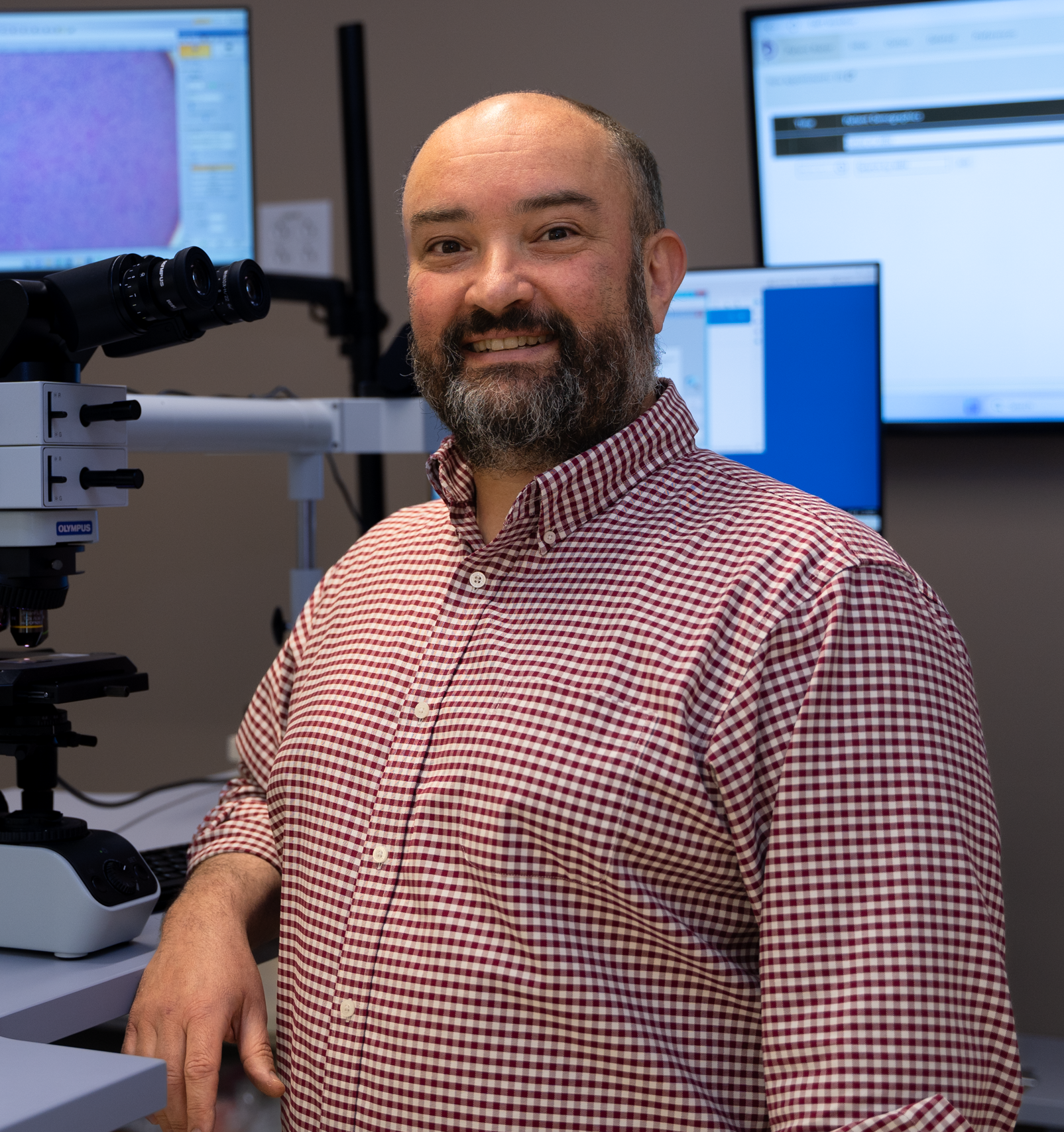Claudio A. Mosse, M.D., Ph.D.
More Information
Tumor dysregulation of apoptosis pathways leading to T cell induced apoptosis resistance
Research Information
I am interested in using the immune system to eradicate tumors. My graduate work was on defining Major Histocompatibility Complex (MHC) class I antigen processing and presentation pathways in melanomas. The goal of this work was to better understand how a protein becomes an antigenic target for T cells. Unfortunately, even after we identified targets for the immune system, and after we developed means to generate T cells against those targets, it was still difficult to "cure" mice and even more difficult to generate measurable responses in our human trials. Why weren't we able to cure melanoma? Well, we (read "tumor immunologists") explain these failures in multiple ways:
5 Problems in Tumor Immunology (a non-exhaustive list):
1. peptide specific T cells were not sufficiently inflammatory or cytotoxic,
2. T cells did not traffic to sites of tumor,
3. tumor microenvironment was inhospitable to T cells,
4. tumors did not present the antigens we thought they did, and finally
5. the T cells didn't recognize the tumors due to lack of costimulatory signals.
During my clinical fellowship in Hematopathology, I worked with many allogeneic bone marrow transplant (alloBMT) patients and became intrigued by the phenomenon of graft versus host disease (GvHD) followed by lymphoma or leukemia (Ly/Le) recurrence. GvHD is an allogeneic immune response by the donor T cells against the host tissues - primarily skin, liver and GI tract as well as hematolymphoid tissues. Why was a strong allogeneic immune response by the transplanted donor marrow as evidenced by documented GvHD insufficient to mount a curative graft versus tumor (GvT) response? Simply put, if a transplanted immune system can vigorously respond to the normal host tissues - we can see this in the patient's conversion to complete donor hematopoiesis after the host hematopoietic stem cells are killed off by the GvHD reaction - why can't the host's tumor tissue be rejected as well?
I am focusing on lymphomas and leukemias because these neoplasia are the most sensitive to bone marrow transplantation. Addressing the 5 tumor immunology problems stated above,
1. We know that the donor T cells are cytotoxic and inflammatory given the patients' documented GvHD.
2. The donor T cells traffic to the bone marrow and lymph nodes where Le/ Ly typically exist since these areas lose all host cells and are replaced by donor lymphoid cells.
3. Leukemias often exist intermingled with residual normal host hematopoietic cells that are killed off in the GvHD reaction. The immediate microenvironment is more difficult to evaluate.
4. The number of allogeneic antigens is high making deletion of all of them unlikely. Furthermore, loss of an immunodominant antigen allows for a subdominant one to replace it. Also, loss of all MHC antigens should lead to increased donor NK activity to kill the tumor.
5. Most Le/ Ly expresses costimulatory antigens that are sufficient to kill normal host hematopoietic cells.
In short, the allogeneic immune response in the setting of a patient with GvHD should be a great way to reject tumor, yet roughly ¼ to ½ of patients will die from recurrent leukemia or lymphoma (variability reflects variable tumor types, patient ages, etc etc). Many of the typical reasons for tumor escape from the immune system are overcome in this model system. I believe that another rarely examined factor may be important. If a T cell sends a death signal via Fas, TRAIL, TNFalpha or Granzyme B/perforin, but a target cell is “deaf” to that command, would it die? If a tumor lacks the mechanisms for apoptosis as induced by a T cell, it should be resistant to control by the immune system allowing for tumor survival after alloBMT. Defining the mechanisms of tumor resistance to T cell induced apoptosis and seeking methods to overcome that resistance are the focus of my research.

